I am currently working with Javacv which makes use of the public void onPreviewFrame(byte[] data, Camera camera) camera function.
Since camera is deprecated, I have been looking into camera2 and MediaProjection. Both of these libraries make use of the ImageReader class.
Currently I instantiate such an ImageReader with the following code:
ImageReader.newInstance(DISPLAY_WIDTH, DISPLAY_HEIGHT, PixelFormat.RGBA_8888, 2);
And attach an OnImageAvailableListener like this:
private final ImageReader.OnImageAvailableListener mOnImageAvailableListener
= new ImageReader.OnImageAvailableListener() {
@Override
public void onImageAvailable(ImageReader reader) {
mBackgroundHandler.post(new processImage(reader.acquireNextImage()));
}
I have tried using the RGBA_8888 format with Javacv as per this thread: https://github.com/bytedeco/javacv/issues/298 but that doesn't work for me.
So instead I was thinking about using Render script to convert these Images to NV21(YUV_420_SP) format (which is the default output of camera in the onPreviewFrame function) as that worked for me with the camera library.
I have also read posts such as this one and this website to do the conversion, but these didn't work for me and I fear they will be too slow. Furthermore, my knowledge of C is severely limited. Basically it looks like I want the reverse operation of https://developer.android.com/reference/android/renderscript/ScriptIntrinsicYuvToRGB.html
So how can you go from an Image to a byte array that would match the output of the onPreviewFrame function i.e. NV21(YUV_420_SP) format? Preferably using Renderscript as it's faster.
Edit 1:
I have tried using ImageFormat.YUV_420_888 but to no avail. I kept getting errors like The producer output buffer format 0x1 doesn't match the ImageReader's configured buffer format. I switched back to PixelFormat.RGBA_8888 and discovered that there is only one plane in the ImageObject. The byte buffer of this plane is of size width*height*4 (one byte for R,G,B,A respectively). So I tried to convert this to NV21 format.
I modified code from this answer to produce the following function:
void RGBtoNV21(byte[] yuv420sp, byte[] argb, int width, int height) {
final int frameSize = width * height;
int yIndex = 0;
int uvIndex = frameSize;
int A, R, G, B, Y, U, V;
int index = 0;
int rgbIndex = 0;
for (int i = 0; i < height; i++) {
for (int j = 0; j < width; j++) {
R = argb[rgbIndex++];
G = argb[rgbIndex++];
B = argb[rgbIndex++];
A = argb[rgbIndex++];
// RGB to YUV conversion according to
// https://en.wikipedia.org/wiki/YUV#Y.E2.80.B2UV444_to_RGB888_conversion
Y = ((66 * R + 129 * G + 25 * B + 128) >> 8) + 16;
U = ((-38 * R - 74 * G + 112 * B + 128) >> 8) + 128;
V = ((112 * R - 94 * G - 18 * B + 128) >> 8) + 128;
// NV21 has a plane of Y and interleaved planes of VU each sampled by a factor
// of 2 meaning for every 4 Y pixels there are 1 V and 1 U.
// Note the sampling is every other pixel AND every other scanline.
yuv420sp[yIndex++] = (byte) ((Y < 0) ? 0 : ((Y > 255) ? 255 : Y));
if (i % 2 == 0 && index % 2 == 0) {
yuv420sp[uvIndex++] = (byte) ((V < 0) ? 0 : ((V > 255) ? 255 : V));
yuv420sp[uvIndex++] = (byte) ((U < 0) ? 0 : ((U > 255) ? 255 : U));
}
index++;
}
}
}
and invoke it using:
int mWidth = mImage.getWidth();
int mHeight = mImage.getHeight();
byte[] rgbaBytes = new byte[mWidth * mHeight * 4];
mImage.getPlanes()[0].getBuffer().get(rgbaBytes);
mImage.close();
byte[] yuv = new byte[mWidth * mHeight * 3 / 2];
RGBtoNV21(yuv, rgbaBytes, mWidth, mHeight);
Here mImage is an Image object produced by my ImageReader.
Yet this produces a result similar to this image:

which is clearly malformed. Seems like my conversion is off but I cannot figure what exactly.